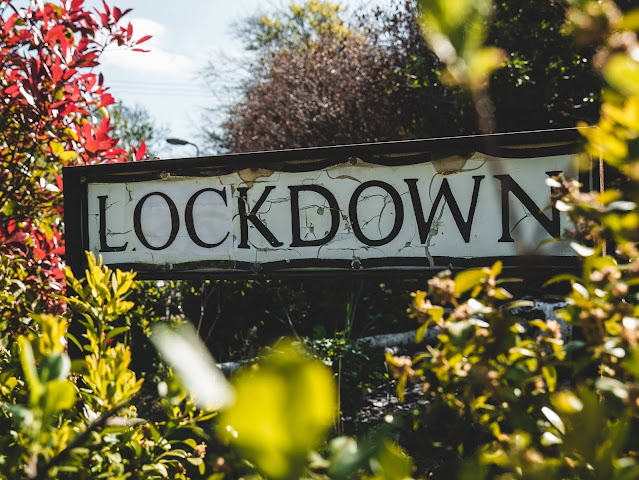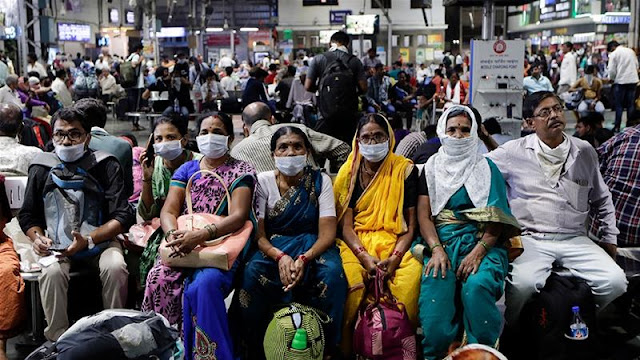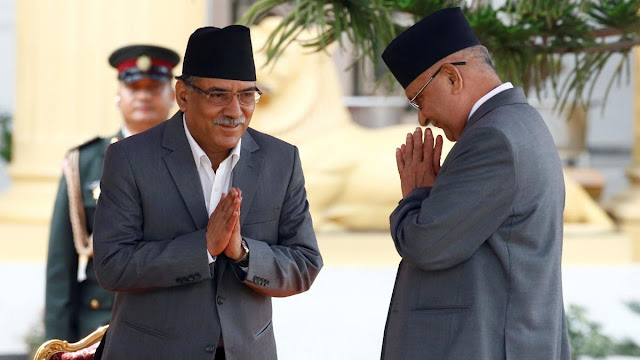Why Lifting Lockdown Without Enough Testing Might Backfire?
Many breathed a sigh of relief after the government decided to end four months-long lockdown. "The number of cases is going down" was the response from the government for ending the lockdown. But, recent news suggesting the community spread of COVID-19 in Ithari, Gaidakot, Biratnagar, Kathmandu has started to cause concern and many experts are/were questioning the decision of the government i.e. if it's wise to lift the lockdown without sufficient testing. So, why lifting lockdown might backfire ?Many believe that this will only lead to catastrophe in a country like Nepal, which has a poor health infrastructure. Since the rate of testing has been consistently poor, this decision might cause unbearable loss due to an uncontrollable outbreak.

Photo by Matt Seymour on Unsplash
Many health experts are suggesting that the community spread of the virus has started and recent stats might justify their claim. People are predicting that Kathmandu is likely the next hotspot of Nepal. 53 and 45 new infections on Wednesday and Thursday respectively is very alarming. Now with no lockdown, movement of people is not regulated and safety measures are not followed, add that with the dense population of Kathmandu, no proper quarantine and isolation centers, and low testing rate; one can easily guess the risk Kathmandu and its inhabitants are in.
Not to cause panic but awareness.

Why was there a lockdown in the first place?
Scientists testified that hundreds of millions of infection have been prevented due to lockdown as it stops the movement of people since they can't move around quickly and it helps in slowing down the curve [1]. It controls and aids in containing the spread so that it stays within the boundaries and the health system can cope. No country in the world can cope with a virus-like this if it spreads uncontrollably; as the number of doctors, hospitals, staff, ICU, ventilators, etc. will not be enough when the spread increases exponentially. Lockdown helps and creates an environment for testing, isolation, and contact tracing by limiting the spread to certain areas. However, just relying on lockdown to win this war is stupid. Without enough testing, isolation practice, and contacting tracing only lockdown doesn't mean much.

Soure: KathmanduPost
Lockdown, widespread test, isolation, and contract tracing should be done simultaneously as it's easier to do and follow later essential steps during lockdown but the Nepal government has failed to utilize the lockdown period to improve quarantine facilities and expand PCR testing. [2]
There was four months during the lockdown and 2-3 months before the lockdown for the government to come up with an action plan. Isn't it enough time for government to prepare and respond better than it's doing now ?
How's the situation?

Around 10 million have recovered from this virus as it has infected nearly 16 million and resulted in 663,570 deaths in 188 countries as of this writing.
SARS - COV - 2 (Severe Acute Respiratory Syndrome Coronavirus 2) is the cause of this global chaos. Nepal's first coronavirus case was detected on 23rd January and on 4th April 2020 the first public transmission was detected. Lockdown started on 24th March and ended on 21st July (officially). According to MOHP (Ministry of Health and Population), as of July 31, Current Stats of Nepal: Infected: 19, 771, Recovered: 14,399, Active: 5,316 and Deaths: 56.
Low testing, deteriorated healthcare and poor social protection are the major issues in Nepal's fight against COVID-19.
Test kit corruption scandals by OMNI group and unusable/incompatible kits procured by Nepal Army are the latest shameful acts that involves Nepal government. These cases link directly to the government which has created a doubt concerning competence of this government. It is reported that the kits procured by the Nepal Army don't fit in the existing PCR machines[3]. However, Army Chief replies that they purchased the kits according to the specifications provided by the Health Ministry. "The blame game" continues as no one takes the responsibility. One cannot imagine how a sane human being can do something like this in crisis. No immediate action against the culprits is visible and there's no to little hope of that happening.

Source: Kathmandupost
As a developing country with very weak health infrastructure, there is no double cab ambulance for transporting highly infectious patients and isolation wards in the hospitals were nonexistent in the starting days. Bio-safety level 3 labs are not to the WHO standards and they are out of operation due to the lack of qualified human resources [4].
COVID-19 has affected 98.5 % of the worlds student population.
Recently in March, few individuals went for COVID-19 test at Sukraraj Tropical and Infectious Disease Hospital and only thing that hospital checked was body temperature. No further investigation was done even though they had told the hospital officials, they had a suspicion that they might have been in contact with an infected person. [5]
It has been reported that there have been several offers from aid agencies, including the World Bank, which have offered logistical and financial support but the Nepal government doesn't seem interested. [6]. Coronavirus hospitals are already full as patients are told to self isolate in their homes. In Birgunj, the isolation ward set up by Nepal Army at a school building has not come into operation as it lacks proper medical equipment, infrastructure, and human resource. The government officials blame hospitals and hospitals in-charges are blaming government officials as the blame game continues. [7]
There are numerous examples where the government has provided faulty machines not just once but twice. Most of the testing machines distributed by NPHL (National Public Health Laboratory) to provincial labs were unusable due to their unreliability [8].

The government favoring RDT over PCR is inconceivable.
Today, I don't think I have to convince anyone except government why PCR is a must!
As other efforts and responses of the Nepal government, the decision to impose the lockdown was very unhurried in the first place (Lockdown started due to high pressure from the citizens) and now, the effort to fight the virus has been very sluggish. Lack of interest and urgency has already cost a lot of lives and who knows how many it will claim before the people in government and public come to their senses.
What's more alarming is: most cases in Nepal are asymptomatic and the only way to detect the virus is test, without waiting for the symptoms to develop.
The decision to end the lockdown was taken under pressure as dissatisfaction was growing among the public and business owners. The government never properly communicated the measures it was taking to help business neither expanded testing nor provided relief before, during, or after the lockdown [9]. Many believe it a trick to shift the blame from the government to the public.
Many postulate that the decision was done in haste to start the "blame game". "See I told you, we should be in lockdown but you didn't want and this rise in number is because you didn't follow the regulations and guidelines".
Okay, most of the Nepalese stayed in their homes for four months, what did the government do? Nepal government had more than enough time before and during the lockdown to prepare and fight this calamity but it chose to stay idle.
Lockdown without adequate testing means nothing as we are witnessing around the globe. The only way to combat this virus is by conducting enough tests. As WHO says " Test, test, test, test, and test" and tests should not be only done to identify the number of people infected but to isolate those people and conduct contact tracing. In most of quarantines of Nepal, citizens have to wait for days to get their results and in some cases, they are sent home without having to wait for the PCR report.
There was a news stating that people were allowed to leave quarantine not after the test result but after making an oath. How much will this cost? This pretty much sums up the status and approach of the Nepal Government against COVID-19.
"You cannot fight a fire blindfolded. And we cannot stop this pandemic if we don't know who is infected " - Dr. Tedors Adhanom, Director-General of WHO
What happens when you lift the lockdown too soon ? - Brazil, US, and India
Brazil and the US
To understand the importance of lockdown one doesn't need to look further than the US & Brazil. These countries never had a proper shutdown. Brazil and the US are the countries that are leading the race in the charts for most infections and deaths. I mentioned these two countries together because the response and approach to COVID-19 was similar especially from the presidents. There were a lot of denials and conspiracy theories by President Trump and Jair Bolsonaro. Both failed to act until it was too late. And, they entertained conspiracies instead of developing an actual response. Now, both are swamped by a caseload that they cannot handle [10]. With proper action and a bit of common sense, these tragedies in both countries could have been minimized to a greater extent. Especially, Trump was swinging between denial, false comfort, blame, and bad medical analogies which have cost America greatly.

Source: Flickr
The difference between these two countries is: one is a developed country and has a developed health care system. That's why the situation is more dangerous in Brazil than in the US. There have been noticeable spikes in the US after states started to reopen. This further implies that when there is free movement of people who try to ignore the risk of the virus, make situation worse.
Brazil is another testament to the power of uncontrolled virus spread to overwhelm the health system. One can argue that the situation would be entirely different if the right action was taken at the right time.
India
India imposed lockdown but started reopening before their case counts began to drop. The condition of low-income migrant and daily wage workers is terrible. COVID-19 and ignorance of the government led many workers to walk hundred of miles to reach their villages. There has been a problem of people fleeing quarantine centers due to overcrowding, unhealthy facilities, and improper management. It is estimated that around 6-10 million migrants have been impacted by COVID-19. (Does this all sound familiar ?)

India is testing more than 4,00,000 samples per day and yet it's still not enough. India is testing around 4,100 people per million compared with a global average of 29,000 tests per million. Also, 12.86 tests per 1000 for India and 11.92 tests per 1000 for Nepal have been conducted according to the population size[11].

Source: Aljazeera (Rajanish Kakade/AP Photo)
Health officials in India are crying for more tests as low testing rates have coupled with a high percentage of infection. The main issues in India are low-level testing, implementation failures in containing the spread during the lockdown, and serious impacts on other health services. It has been concluded that the interstate movement of migrants and movement of people during and after the lockdown has helped in spread hence resulting this spike. [12]
These examples are more than enough to state the importance of the lockdown and how deadly it can be if a country is not cautious before reopening. As suggested by experts, the mantra to defeat COVID-19 is increased test rates to identify positive cases and isolation, and controlling spread by testing, contact tracing, and quarantining effectively.
How some countries have been able to contain the virus? - Success stories
Countries that have limited the impact to a greater extent are Taiwan, Singapore, New Zealand, Australia, Germany, Iceland, etc. They acted very quickly, conducted a massive amount of testing, isolated everyone away from home, implemented contact tracing, had strict travel restrictions, had face masks for everyone policy, continued practicing social distancing, and stayed patient. [13]

Reproduction number "R" - This tells for each individual who's infected and how many people do they go on to infect. If R is above 1: upward spiral - an exponential growth. R should be below 1 to control the spread which only seems possible by conducting enough tests during the lockdown.
A methodology was developed by Eurasia Group to assess the responses of the countries that are leading the fight against COVID-19 and here are the findings from that research: Widespread testing along with contact tracing and mobile sim tracking was the foundation for most of the countries in this war [14]. Some countries didn't practice sim card tracking as it violates privacy but this is not a normal situation so it might be justifiable. Though there is a second wave in South Korea, one cannot ignore the success it had in dealing with the virus and developing and exporting COVID-19 tests and medical supplies hand in hand.

Photo by Martin Lopez from Pexels
The nationalized health system was another common link in these countries that responded earlier and aggressively. Most of these countries provided the sizable economic stimulus and most importantly, they didn't let the pandemic response be seized by partisan politics and relied on science to guide the healthcare response instead. Extensive public communication and transparency were ever-present during this fight. Disinfection cleaning campaigns, strict border control, strict interventions, and a healthy amount of fear in citizens were all vital in flattening the curve [15].
Patience is as important as other measures followed by the countries because if it opens too early, there's a risk of triggering exponential growth again. And, this will bring everything which had been done before to nothing as it erases all the benefits gained from the lockdown. The situation might further get worse and lead to more deaths, overwhelm medical systems, and create a scenario where another lockdown might be necessary. So, patience with sufficient effort during the lockdown to contain the virus is the key.
What next for Nepal?
Sealing hospitals do more harm than it does good as the regular patients are left in danger. Essential critical health services and vaccinations should not be neglected. Enforcing emergency measures like social distancing, effective quarantine, hygiene, detection, contamination, and mitigation of virus and face -masks rule are required to tackle this virus. The role of monitoring and modeling is often ignored in Nepal and this might be due to the lack of skilled human resources or equipment. Monitoring helps in better preparation and planning.


Source: Annapurna Express
Nepal's lack of data and technology has further hampered the response against COVID-19. The countries that were successful in containing this virus had technology on their side so it's a lesson that has to learn sooner than later.
Experts are suggesting Gene Xpert machine that is generally used to test tuberculosis can be used to test coronavirus[16].
Everybody is hoping that the Nepal government, politicians, and the public are finally aware of the hole in our health system. There is a need for huge investment in health infrastructure. Nepal needs to be prepared for the future outbreaks by improving and developing health emergency preparedness. Adjusting and attracting investments and addressing rising unemployment is a huge challenge for the Nepal government after this COIVD-19 crisis.
The priority should be on situation mitigation of low-wage workers who are struggling to survive. And, there's no doubt that the government needs to increase the testing capacity as soon as possible (Delay now can cause irreversible disaster). The government has failed to utilize the private sector. The density and capacity of test sites should be increased without further delay. Additionally, a huge improvement in procurement and Supply Chain is a must.
To wrap it up, the only way to control the spread and contain this virus is large scale testing across the population.
When will the Nepal government understand this? Why did we stay in our homes for four months? We fulfilled our responsibility when will the Nepal government act responsibly? What do you think?
Food for thought

Source: Nepaltimes (Nepalis returning from India. Photo: DINESH KHABAR)
Will we still be in this crisis if the government was able to manage 7,50,000 people returning from India instead of threatening and halting them at border ?
Related Articles: Why online education is not the future ? , Corruption in Nepal: Effects, Causes and Remedies, Agriculture Supply Chain (Nepal), MCC, Impact of COVID-19 on Sports (Football) Industry., Lockdown Stories, Challenges of Nepal Government in Corona Era and Impact of COVID-19 on Supply Chain.
Thank you for your visit. I hope everything was clear, if not please do not hesitate to contact me for suggestions or queries regarding this topic. Honest feedback is highly appreciated. You can contact me via “ashishworks2020@gmail.com “. Thanks again.


Related Articles: Why online education is not the future ? , Corruption in Nepal: Effects, Causes and Remedies, Agriculture Supply Chain (Nepal), MCC, Impact of COVID-19 on Sports (Football) Industry., Lockdown Stories, Challenges of Nepal Government in Corona Era and Impact of COVID-19 on Supply Chain.
Thank you for your visit. I hope everything was clear, if not please do not hesitate to contact me for suggestions or queries regarding this topic. Honest feedback is highly appreciated. You can contact me via “ashishworks2020@gmail.com “. Thanks again.




No comments: